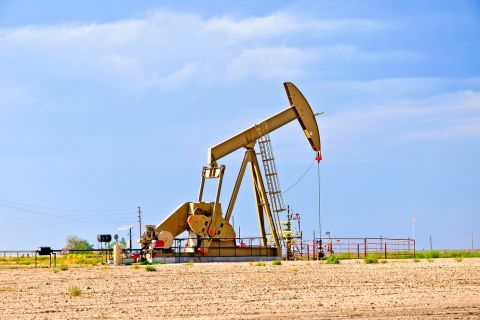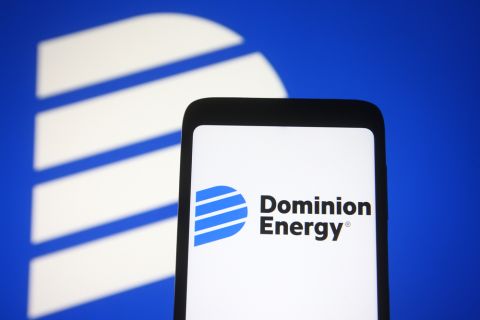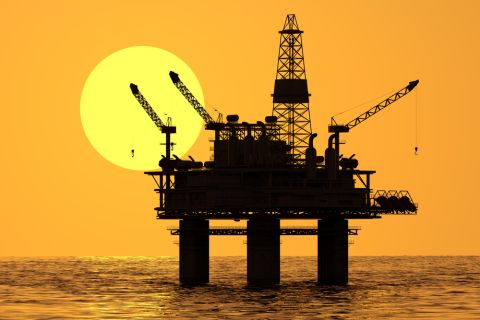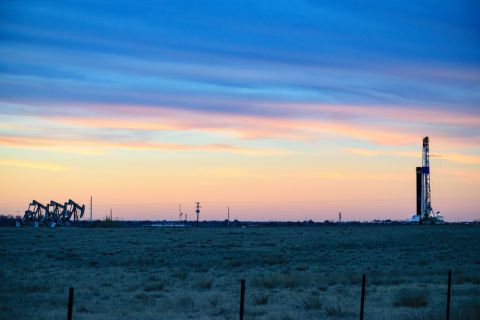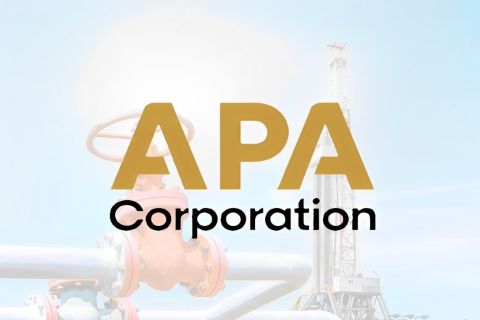Seldom have two different approaches to the same goal elicited so much controversy. That hydraulic fracturing is the only practical way to coax unconventional hydrocarbons out of tight shale beds, whose permeability often registers in nanodarcies, is a given. However, selecting the technique that is best for the particular well or reservoir in question is quite challenging.
To get a sense of the conventional wisdom surrounding shale completion decisions, Qittitut Consulting, a Houston-based international consulting group, queried a cross-section of operators and experienced service providers. The 2Q 2011 study focused on horizontal completions in oil producing plays, pure gas plays, and plays such as the Eagle Ford, where oil, condensate, or gas is encountered depending on the location of the lease. Not surprisingly, opinions varied. Typical drivers – cost, efficiency, and flexibility – were joined by logistics which, thanks to a strong competitive market, rarely plays a critical role. However, in the present situation, it may be that logistics in the form of frac crew availability is the deciding factor.
Although each method has slight technical and procedural variations, the premise of the research was to examine completions categorized as openhole multistage (OHMS) vs. those categorized as plug and perf (PNP). These are by far the most popular techniques currently in use. Which offers the most advantages? The debate rages.

Five-year forecast.
Technique fundamentals
In the OHMS technique, the completion string is assembled with sliding sleeve ports and external isolation media in such a way that when the completion string is landed, the ports lie opposite the predetermined depths where formation stimulation will be initiated. The interzone isolation media – either external casing packers or swellable packers – are placed appropriately in competent strata with good borehole conditions. In the case of swellable packers, an appropriate time interval is allowed for the packers to set. This can take several hours or days and is accomplished before the frac crew is dispatched. Usually the completion rig is demobilized and moved off location during this interval.
After the frac crew arrives, the stimulation takes place as a continuous activity. The sliding sleeve ports are opened sequentially from toe to heel, and the treatment is pumped through the open port into the formation. Fracturing takes place in a typical fashion with the point of least resistance fractured first. If desired, diverters can be pumped to initiate additional fractures in order of next-to-least point of resistance until the entire stage treatment has been pumped.
At this point in the OHMS technique, the next subsequent port is opened while simultaneously closing off the zone just treated, with pumping continuing on the second zone. The procedure is repeated until all zones have been treated. It is possible to skip a zone if its treatment is ill-advised for any reason; however, it is not possible to add a zone. Pumping is only paused shortly between stages to allow time for sleeve shifting.
Recently, the OHMS technique has been used on cemented completions that use special acid-soluble cement. After the port sleeve is opened, acid is used to dissolve the cement opposite the open port, which provides access to the formation behind it so the treatment can be pumped. This modification eliminates the need for external zonal isolation devices and can constrain fracture initiation to the area where the cement sheath has been dissolved.
The OHMS technique has been applied most frequently in unconventional horizontal well completions. The most attractive feature of the technique is its speed. Several stages can be stimulated in a single day. Initially, the technique was limited to about six stages, but technical improvements have raised that limit to more than 20 stages per well.

The PNP technique follows traditional completion procedures. A cemented liner can be set through the completion interval, or an uncemented liner can be used. A plug is attached to the bottom of a perforating gun and conveyed into the well. Any method (pump-down, tubing-conveyed perforating, wireline tractor-assisted conveyance or coiled tubing) can be used to position the plug/gun combination in the lateral. The plug is set at the appropriate depth below the toe zone and shears off. Then, the gun is pulled uphole and positioned precisely opposite the first zone to the stimulated. The gun is fired and pulled out of the hole. If desired, several intervals of the same stage can be shot using select-fire guns on the same trip. When the stage has been treated, the next gun/plug combination is deployed, and a composite frac plug is set to protect the zone. The process is repeated for the next stage. Although all stages are preplanned, the operator can change, delete, or add a stage if observations indicate such a deviation from plan is advantageous.
Another type of PNP treatment involves ultra-high pressure abrasive jetting that is deployed on coiled tubing to perforate and treat individual intervals. Usually, a sand plug is set to protect previously treated intervals as the process is repeated for subsequent stages. The abrasive jet technique is used mostly on shallower wells but has the same flexibility as conventional PNP.
An earlier PNP technique that rarely is used now involves setting an uncemented liner in the lateral and treating the formation through perforations made at selected intervals. The theory behind this is that the formation will always fracture at its point of least resistance. Of course, this could be into an aquifer or an offset well. Most operators are no longer using this technique because of its unpredictability and the introduction of real-time microseismic fracture mapping.
Depending upon the number of stages to be treated, the PNP technique can take several days or more. The big advantage is that since each stage is treated individually, decisions can be made on the fly to change the location of the next stage, add or delete a stage, change the interval perforated, and so on – in other words, PNP affords complete flexibility. The PNP technique also favors the implementation of advanced treatment techniques such as Simul-frac or Zipper frac.

Factors influencing the choice of technique
The savings in cost was listed by 66% of the respondents as the primary factor influencing their decision to use one technique over another. Higher well productivity was cited by another 20%. Therefore, the primary drivers are speed for cost savings or flexibility for higher well productivity. The poll also showed that in 80% of cases, the operator rather than the service company makes the decision. But the decision is seldom obvious – operators appear to be stymied in choosing OHMS vs. PNP because other factors play into their decision.
There is no question that the OHMS technique is considerably more efficient in terms of field operating time, and the gap grows as the number of stages is increased. Several years ago, conventional wisdom held that a few widely spaced long-length fractures were the best way to fully exploit the reservoir and ensure maximum estimated ultimate recovery (EUR). Using a popular rule of thumb to double the frac length, one must quadruple the volume of treatment pumped. This increases the possibility of problems and adds to the cost. Recent experience has shown, however, that numerous closely spaced short fractures produce better results over the life of the reservoir. This outcome would seem to tilt the scale in favor of OHMS owing to its superior efficiency, but OHMS is not the predominant technique in many plays.
The survey revealed that while today more than 50% of frac treatments in the Bakken play use the OHMS technique, the use of OHMS is considerably less in other plays. Many operators believe OHMS carries an unacceptably high element of risk. If the operator cannot get to total depth with the completion, the completion must be laid down so a reamer or cleanout trip can be made. This can be problematic if swellable packers are involved because they can be activated and cause difficulties in round-tripping the completion. The alternative, if the completion is not too far off depth, would be to land the completion where it is and proceed to treat the well at less-than-optimum depths. Another more disturbing risk can crop up during the treatment. If pumping monitors indicate that a change should be made in stage depth, it cannot be made with OHMS. The intervals are preset when the completion string is run. In addition, enlarged boreholes and washouts in the laterals, often caused by drilling methods, increase the risk that the external isolation media will not seal completely.
Another overriding issue that can affect an operator’s decision on which technique to choose is the critical shortage of frac crews and equipment, especially in North America. Getting a frac date from a service company is much easier if the crew is needed for only a few days. It is exceedingly difficult to get a frac crew contracted for a week or more. This problem is likely to lessen in coming months, but presently it puts pressure on operators to choose expedience over a systematic approach, even if the systematic approach offers greater flexibility.
Adding to the complexity of either choice is whether water and proppant material are available. Lack of these can bring operations to a halt with disastrous consequences. The service industry is working to mitigate shortages of both, and results vary according to the geographic location of the play.
The inherent flexibility of PNP would seem to run second to the higher efficiency of OHMS, but technology has played a major role in leveling the playing field. The development of microseismic fracture mapping allows operators to monitor fracture propagation in real time, and the introduction of dissolvable diverters allows engineers to steer the fractures away from geohazards and offset wells. The main benefit of PNP is its ability to use real-time fracture mapping to make changes on the fly and thus place fractures where they are wanted, extend them as deeply as desired, and avoid geohazards such as aquifers that can instantly turn a potential oil or gas well into a water well.
In more mature plays, such as the famous Barnett shale of North Texas, refracs have become popular. Some wells are on their fourth refrac. This technique, which can restore new life into a declining producer, cannot be implemented with OHMS. The recently introduced Simul-Frac and Zipper Frac techniques show great promise and play to the PNP camp. These techniques involve alternating between stages on two or more adjacent wells, holding opposing stages in offset wells under pressure while treating the opposing stage in the well being fractured. Doing this creates a protective stress field around the pressured-up stages and diverts the fracture in the well being treated so the fractures do not intersect. Good coordination between the pumping crew and perforating crew is required, and results so far have shown that the practice has merit. It also mitigates some of the inefficiency of the PNP technique because multiple wells can be treated on the same trip to the field.
When asked to estimate the fraction of wells in each play that were PNP candidates for technical reasons (meaning that they cannot be completed using OHMS), respondents had strong opinions. Note the low frequency in Bakken and high frequency in Haynesville.
Diverse opinions in the field
Survey responses to the pros and cons of the OHMS vs. PNP techniques are tabulated in Tables 2 and 3. A total of 56 of the 116 survey participants expressed an opinion and 53 opted not to respond to the OHMS true/false questions. This lack of response may indicate inexperience in multistage stimulation completions or a market segment that has not yet formed an opinion on these issues. The key unresolved question is whether saving frac time and cost with OHMS is more valuable to operators than potentially improving well performance from the flexible but higher cost PNP.
Stated another way, one might ask, “Is it preferable to use a technique that has proved itself to be highly efficient when it works or to use one that almost always works, and may improve EUR of hydrocarbons over the life of the well? Which technique – OHMS or PNP – poses the greater risk, or which technique promises the greater potential reward?”
Each procedure has its champions, but overall the PNP technique is the most popular, its inherent inefficiencies notwithstanding. Even with clear acknowledgement of the speed with which OHMS treatments can be implemented, in a significant number of areas, the complexity and potential for problems has tempered enthusiasm for the technique. Less clear is the acceptance of a potential advantage of one technique over the other in terms of productivity potential where the number of respondents choosing true, false, or no opinion was almost equal.

A clear bias for OHMS in oil plays such as the Bakken was noted, most likely because significant financial advantages can be obtained by shortening time-to-market of a high-priced commodity and because the relatively higher upfront cost of OHMS completions can be justified in a play based on oil economics. The opposite is true in shale gas plays where the opportunity to optimize ultimate production influences operators to choose PNP completions.
A recently completed benchmark study compared decline curves from the five major shale gas plays. In each case, initial production registered a sharp peak that rapidly declined to about 10% to 20% of the peak value but than flattened and showed potential to continue at that rate for 20 or more years. With the possibility of realizing sustained production for decades, some operators are taking every step possible to optimize their completions.
Looking into the crystal ball
Respondents were asked to forecast OHMS and PNP activity through 2016. Results were generally optimistic, with slightly more favoring OHMS. When asked to forecast activity over the next three years for each technique in plays where they had experience, respondents’ opinions were mixed. Almost as many reckoned the activity would decrease rather than increase. However, OHMS was definitely rated to gain traction in plays other than the Bakken where it is already well established. It is unknown how seriously these forecasts were influenced by present supply shortages.

Forecast for OHMS by play.
There is ample scientific evidence that completions can be optimized by careful attention to pretreatment planning and design, along with systematic implementation of stimulation procedures. A thorough understanding of formation geomechanics as well as geological heterogeneity and complexity should result in less risk and should reduce production uncertainties. It is also correct to say that not all wells suffer these risks and uncertainties. Accordingly, one can conclude that an optimum solution will be obtained when preplanning shows clearly which completion and stimulation technique is most appropriate for the well in question. This will allow an objective evaluation of OHMS vs. PNP under the prevailing logistical and crew availability conditions.
In any case, hydraulic fracturing technology development is ongoing. Innovations are being introduced that have the potential to swing opinion back and forth between methodologies, and a new approach could be just around the corner. Already there is talk about “smart sleeves” that eliminate the ball-size limitation and, if perfected, will allow almost unlimited stages to be treated on a single trip.
It is safe to say that the current shortages of field crews, equipment, proppant, and water ultimately will be resolved, so the effect these conditions have on today’s treatment decisions is temporary at best. Meanwhile, the competition between OHMS and PNP is far from over.

Forecast for PNP by play.
Recommended Reading
Evolution Petroleum Sees Production Uplift from SCOOP/STACK Deals
2024-05-07 - Evolution Petroleum said the company added 300 gross undeveloped locations and more than a dozen DUCs.
Renewable Energy Producers Prep for More Demand from Big Tech
2024-05-07 - Dominion Energy expects to connect 15 more data centers this year.
SLB OneSubsea JV to Kickstart North Sea Development
2024-05-07 - SLB OneSubsea, a joint venture including SLB and Subsea7, have been awarded a contract by OKEA that will develop the Bestla Project offshore Norway.
Permian Resources Adds More Delaware Basin Acreage
2024-05-07 - Permian Resources also reported its integration of Earthstone Energy’s assets is ahead of schedule and raised expected annual synergies from the deal.
APA Corp. Latest E&P to Bow to Weak NatGas Prices, Curtail Volumes
2024-05-07 - APA Corp. plans to curtail gas and NGL production in the U.S. owing to weak Waha prices but remains confident it can deliver in the Permian Basin, CEO John Christmann said during a quarterly webcast with analysts.

